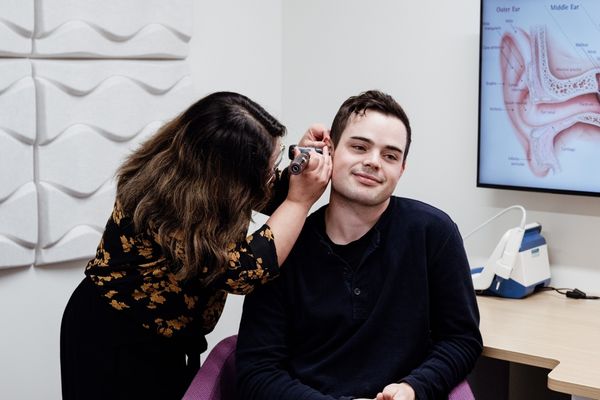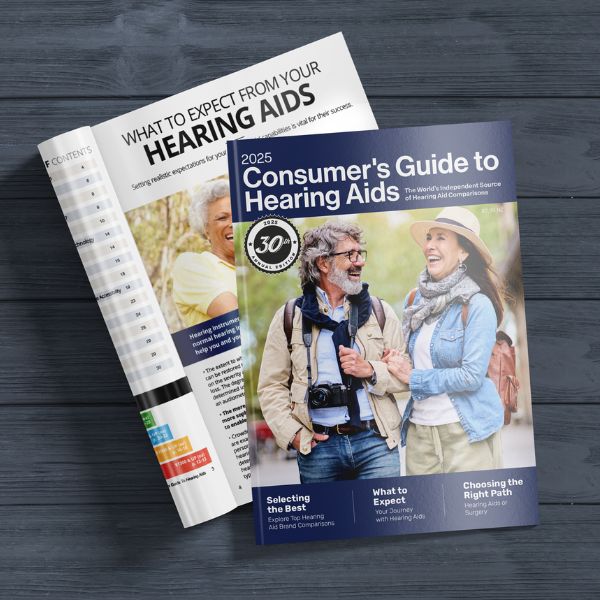Understanding Ear Ossicles: the malleus, incus, and stapes

Understanding Ear Ossicles: the malleus, incus, and stapes
10 min.
Publication Date: 6 December 2024
Last review Date: 3 February 2025
The ossicles are a vital component of the human auditory system. They are responsible for transmitting sound vibrations from the eardrum to the inner ear.
Composed of three tiny bones—the malleus, incus, and stapes—the ossicles play a crucial role in hearing.
This article aims to explore the functions, anatomy, and conditions affecting the ossicles, as well as treatment options for damaged ossicles.
What are the Ossicles
The auditory ossicles are the three tiny bones located behind the eardrum within the middle ear. They form a chain that connects the eardrum (tympanic membrane) to the oval window of the inner ear. These three bones work in coordination to amplify and transmit sound waves, ensuring efficient sound conduction.
As sound waves travel through the air, they are collected by the outer ear or pinna, which funnels the sound waves into and along the ear canal towards the tympanic membrane. When the sound waves hit the tympanic membrane, it vibrates.
But how exactly do they work?
- Attached to the tympanic membrane is the first of the auditory ossicles, the malleus. It resembles a hammer and is connected at it's other end to the second ossicle.
- The movement of the malleus transfers sound vibrations to the second ossicle, called the incus, which resembles an anvil.
- The incus in turn, passes the vibrations to the stapes, which looks like a stirrup. The stapes is connected to the inner ear (the snail-shaped cochlea) via the oval window membrane. When this vibrates, it transmits the amplified vibrations to the fluid-filled inner ear.
What is the Function of the Ossicles?
The primary function of the auditory ossicles is to transmit sound vibrations from the eardrum to the inner ear. The shape and arrangement of the ossicles enhance sound amplification, enabling efficient sound transmission.
Here's a step by step of how it works:
- By converting sound waves into mechanical (movement) vibrations, the ossicles increase the pressure of sound waves.
- This increase in pressure makes it possible to match the impedance (or the relative resistance difference) between the air-filled outer ear and fluid-filled inner ear.
- This adaptation optimizes the transfer of sound energy, allowing for clear and precise auditory perception.
Conditions Related to the Ossicles
Conditions Related to the Ossicles
The Ossicles and Hearing Loss
As the ossicles are integral to the transmission of sound vibrations, any condition or damage affecting these bones can lead to hearing loss.
Conductive hearing loss, resulting from the disruption of sound conduction through the middle ear, is commonly associated with ossicular abnormalities.
This type of hearing loss can often be addressed through appropriate medical intervention or surgical procedures targeting the ossicles.
How are Damaged Ossicles Treated?
How are Damaged Ossicles Treated?
Auditory Ossicles and Balance/Vertigo
The ossicles play no direct role in balance or vertigo. Their primary function is to transmit sound vibrations, not maintain equilibrium. However, certain conditions affecting the inner ear, such as Meniere's disease (an inner ear problem that can cause dizzy spells) or vestibular schwannoma6 (a benign slow-growing tumor that develops from the nerves of balance and hearing), can lead to balance problems and vertigo.
These conditions may indirectly affect the ossicles, as they share proximity and interconnectedness within the ear structure.
Summary
The auditory ossicles, consisting of the malleus, incus, and stapes, are essential for the conduction of sound vibrations in the middle ear. They play a vital role in hearing by amplifying and transmitting sound waves to the inner ear.
Various conditions, including otosclerosis, dislocation, and loud noise trauma, can affect the functioning of the ossicles, leading to hearing loss.
Treatment options range from medications to surgical procedures and implants, depending on the severity of the ossicular damage. Hearing devices are a common intervention to overcome the hearing loss associated with damage to the ossicles.
While the ossicles do not directly impact balance or vertigo, conditions affecting the inner ear can have indirect effects on both hearing and equilibrium.
References:
- Arts HA. Ossicular Chain Disorders: Diagnosis and Management. Med Clin North Am. 2018;102(5):925-942.
- Niedermeyer HP. Indication, technique, and results of ossiculoplasty. GMS Curr Top Otorhinolaryngol Head Neck Surg. 2013;12:Doc05.
- Quesnel AM, Ishai R, Cureoglu S, Paparella MM. Otosclerosis: Current concepts in genetics and molecular biology. Otolaryngol Clin North Am. 2018;51(3):551-560.
- Vlastarakos PV, Nikolopoulos TP, Tavoulari E, Papacharalampous GX, Korres SG. Otosclerosis: twenty years' experience from a single ENT tertiary referral center. Audiol Neurootol. 2012;17(5):331-337.
- Middle Ear Implants (2022). Retrieved from https://www.hearinglink.org/your-hearing/implants/middle-ear-implants/ on 30 May 2023.
- Vestibular Schwanoma (Acoustic Neuroma) and Neurofibromatosis (2017). Retrieved from https://www.nidcd.nih.gov/health/vestibular-schwannoma-acoustic-neuroma-and-neurofibromatosis on 30 May 2023.
The information contained in this article is for educational and informational purposes only. You should not use the information as a substitute for, nor should it replace, professional medical advice. If you have any questions about your health, you should always consult with a physician or other health-care professional.







